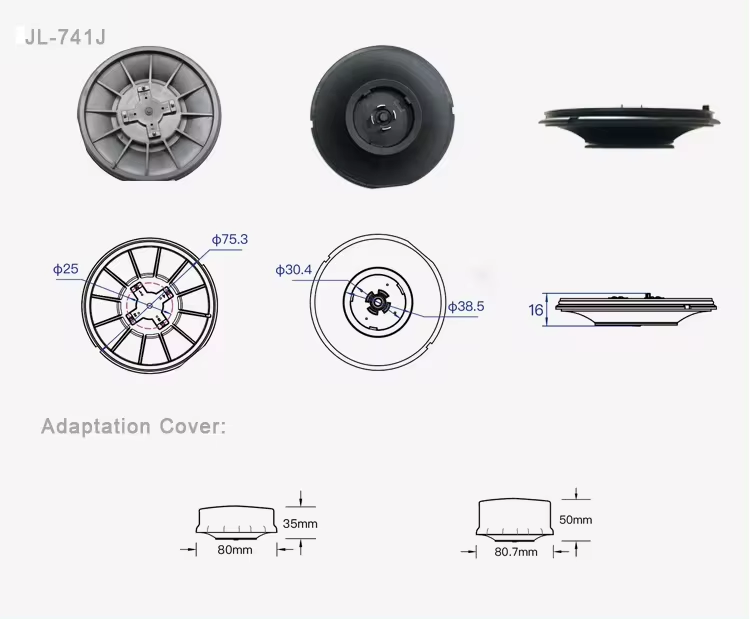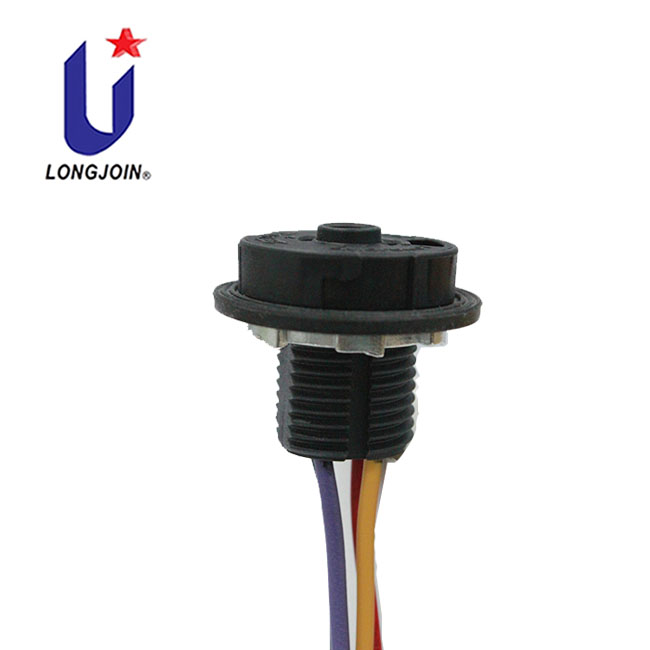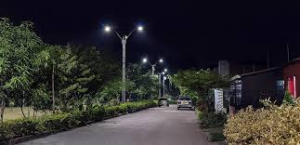How Do Zhaga Photocells Integrate With Other Lighting Components?
Zhaga cells are a product of advancements in technology. These are electronic devices designed to operate lighting systems automatically. They sense the lighting level in the surroundings and use this to control the switching on and off of the lighting system. They have different types available including standalone Zhaga photocells and integrated Zhaga photocells. It can adapt to various applications.
Caption: Zhaga book lock socket

Benefits of Zhaga Photocell Integration
Zhaga cells stand out from traditional lighting systems due to the numerous benefits they offer. Zhaga cells control the activation of lighting systems, Yet, this is not all it provides you. It has many benefits. Some of these are;
Energy Efficiency
Integrating Zhaga photocells into your lighting system would save you money! This happens because it limits the excessive functioning of lights. Lights will only turn on when required, so you never need to worry about high electricity bills. This way you can contribute to energy conservation for the environment.
Lighting Control
Zhaga photocells allow you to precisely control the lighting system. It can be integrated with advanced control systems. This provides greater control based on environmental conditions, occupancy, and user preferences. Your comfort is prioritized with these cells.
Durability
Zhaga cells prevent the working of lights during daylight hours. Lights will not operate when unnecessary, so they can work for longer. The lifespan of LED luminaires is extended. You don’t require huge maintenance costs or the costs of replacing lights frequently.
Zhaga Cells Integration with Other Components
Zhaga cells can be easily associated with a variety of lighting systems. This allows comprehensive control. You can optimize the lighting system easily. It enhances the functionality and efficiency of lights by interacting with elements within the lighting system. Let us look into the integration possibilities for Zhaga photocells.
Compatible Lighting Fixtures
- LED Luminaires: Zhaga photocells can be directly linked to LED luminaires. Precise light adjustments are possible with it. These photocells are designed to fit standard Zhaga receptacles. They can be easily installed with a wide range of LED fixtures.
- Traditional Lights: If you have a lighting system already in the palace, Zhaga cells have retrofit solutions. You can get an adapter or a retrofit kit. It incorporates the photocell functionality into the conventional lighting system. You don’t need to get the lights replaced! It’s a simple task.
- Outdoor Lights: Zhaga cells are most commonly used for outdoor lighting. It includes streetlights and lights for parking areas. You can integrate Zhaga photocells into these fixtures. It will give significant energy savings. Moreover, the illumination level is appropriate throughout the day.
Control Systems
- Centralized Lighting Control Systems: You can combine Zhaga photocells with centralized lighting control systems. You can monitor and control their activity through a centralized system. Here you can set the schedule for operation, the threshold for activation and deactivation of lights, and get live information. It provides efficient operation and maintenance facilities.
- Wireless Protocols: You can find Zhaga cells that can be linked to wireless connectivity options. You can link them with smart lighting networks that use Bluetooth. It allows you to operate them with a remote, or through your smart devices. It uses the Internet of Things system for this operation.
- Smart Home Platforms: Popular platforms like Google Assistant and Amazon Alexa also connect themselves to Zhaga cells. It means you can control these cells by your voice! This provides an additional layer of convenience and energy efficiency.
Sensors
- Motion Sensors: If you connect Zhaga photocells with motion sensors, it detects occupancy. It monitors ambient light levels along with occupancy status. This way it dynamically adjusts the brightness and operation of lights.
- Occupancy Sensors: Zhaga photocells manage lights intelligently. In offices or warehouses where occupancy patterns vary, Zhaga photocells can be used. It detects the presence of people, and rapidly activates the lights. It can save a huge sum!
- Energy Management Systems: Connect your Zhaga photocells with the Building energy management systems. It is a type of centralized control. It controls energy expenditure, and implants demand response strategies. Furthermore, it will facilitate load shedding or laid shifting. Signs are considered by the centralized system, and the operation is adjusted to balance the grid demand. It reduces peak energy consumption.
Caption: Future proof Zhaga new generations
Other Benefits of Zhaga Photocells
- Always conduct a compatibility test between the photocells and the lighting system. You can use control systems or communication protocols to verify it.
- Read the manufacturer’s guidelines for the wiring and installation of the photocells. Use the voltage as given in the guidelines. You can get wiring diagrams to prevent damage.
- Calibrate your Zhaga photocells according to their environment. Consider the lighting level you require. You can do this by adjusting sensitivity and threshold.
- Installs Zhaga photocells in places with little or no obstruction. They should be protected from direct sunlight.
- Regularly inspect these cells and their components. Clean the photocell lenses and sensor surfaces to remove away the dirt and debris.
FAQs
What is the Zhaga Connector?
The Zhaga connector is an interface that connects LED modules to LED drivers. It simplifies the assembly and maintenance of a lighting system.
Can Zhaga photocells be used in outdoor environments with extreme weather conditions?
Yes, many Zhaga photocells are manufactured in a way that makes them suitable for harsh weather conditions. They can withstand rain, snow, or high temperatures. However, you should always choose a model suitable for outdoor use.
How do Zhaga photocells communicate with other lighting components?
Zhaga photocells use wired or wireless communication to interact with linked components. Wired connections include DALI, and wireless protocols are Bluetooth or Wi-Fi.
Can I install Zhaga photocells with the existing lighting system?
Yes, Zhaga photocells are flexible. You can upgrade your existing lighting system with the new feature of a Zhaga photocell.
Can I connect Zhaga photocells with renewable energy sources?
Yes, you can connect them to lighting systems that are operated by renewable energy sources. It has intelligent control systems that are not affected by wind or solar power.
Conclusion
You can integrate Zhaga photocells with a variety of light g components. They allow better control, energy efficiency, and precision. Zhaga photocells adapt to changing environmental conditions, and user requirements. This is a smarter and more efficient solution for lighting systems.







